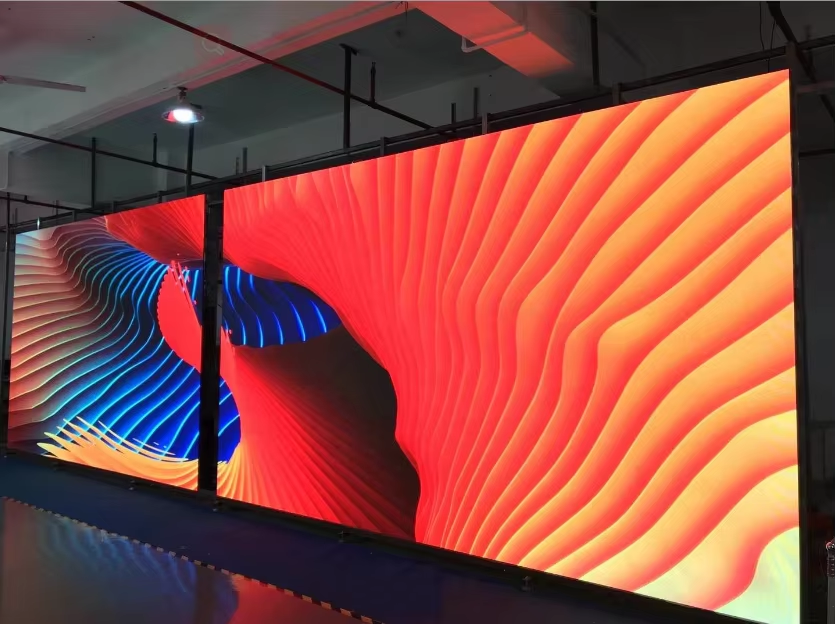
How does LED video processor work in LED display?
Introduction
With the development of technology, in the world of digital signage and large-scale displays, LED screens have become the go-to solution for high-quality, vibrant visuals. As one of the core accessories of LED display systems, LED video processors plays a crucial role in ensuring that screen content is clear, accurate and presented in the correct format. So, how does the video processor control the LED display? In this blog, we will deeply analyze the main functions of the LED video processor and how it optimizes the performance of LED displays.

What is an LED video processor?
An LED video processor, often referred to as the “brain” of an LED display system, is a specialized hardware device designed to take video input signals, process them, and deliver them in a way that the LED display can properly interpret and display.
While LED screens can display a variety of resolutions, they often rely on video processors to ensure that the input video is compatible with the screen’s resolution, aspect ratio, and color settings.

What are the components of an LED video processor?
An LED video processor is composed of several key components, including an input interface module (for receiving various video signals), a signal processing chip (responsible for image processing and signal conversion), an output interface module (for transmitting the processed signal to the LED display), a control system (for managing display settings), and memory and power modules (to ensure stable system operation). These components work together to ensure that video signals are displayed on the LED screen with optimal quality.

How does an LED video processor work?
An LED video processor acts as an intermediary between the video source (e.g., a computer, camera, or media player) and the LED display. Here’s a step-by-step look at how the processor controls the LED screen:
Signal conversion
The LED video processor can receive input signals from different sources such as HDMI, DVI or VGA. The processor converts these signals into a format that the LED display can understand. Different displays may have different requirements, so this conversion process ensures that the screen works regardless of the signal source.
Scaling and resolution matching
One of the main functions of an video processor is to adjust the resolution of the input video to match the original resolution of the LED screen. For example, if the LED screen resolution is 1920×1080 and the input video is 1280×720, the processor will enlarge the video to fit the screen without losing quality. Correct scaling ensures that content is not distorted or pixelated.
Color correction and calibration
LED displays require precise color control to ensure that content is vibrant and accurate. LED video processors adjust parameters such as color range, brightness, and contrast to optimize image quality. This is especially important for large displays, where consistent color and brightness are essential.
Image processing
To further enhance video quality, video processors use a variety of image processing techniques. These techniques include deinterlacing, noise reduction, and motion compensation, which help eliminate visual imperfections and improve image clarity.
Multi-window and picture-in-picture (PIP) capabilities
Advanced LED video processors allow users to display multiple video sources simultaneously. This feature is useful for large events or digital signage, where multiple content can be displayed simultaneously. For example, you can display live videos, slideshows, and logos in different areas of the same screen.
Synchronization and latency reduction
LED video wall processors ensure that all parts of a large display remain in sync. Without synchronization, different screen areas may display different video frames, resulting in inconsistent images. Modern video processor also minimize latency, ensuring that the content displayed on the screen is as close to real-time as possible.
Edge blending and image stitching
For display settings using multiple LED panels, the video processor provides edge blending and image stitching capabilities. This helps create a seamless visual effect between different panels, ensuring smooth image transitions and a more harmonious overall display.

Why are LED video processors essential?
Without a dedicated video processor, an LED display would not be able to efficiently handle input from various sources. Here are some reasons why LED video processors are indispensable:
Better image quality
Ensure that the video displayed on the LED screen is clear, vibrant, and aligned with the screen resolution.
Flexible input
Can connect and process multiple video sources, eliminating the need for multiple devices.
Synchronization
Ensure that the display of different panels remains synchronized, providing a smooth and consistent viewing experience.
Content management
It provides advanced content management capabilities such as multi-window display and real-time updates.

Conclusion
In conclusion, an LED video processor is a key component in any LED display system. By handling signal conversion, scaling, color correction, and synchronization, the video processor ensures that content is displayed on the screen in the best quality. Whether setting up a large outdoor LED screen or a small indoor LED display, choosing the right video processor can significantly impact the performance of the LED display.
Understanding how these processors work will not only help maintain a high-quality visual experience, but also ensure the efficient and reliable operation of LED display systems.